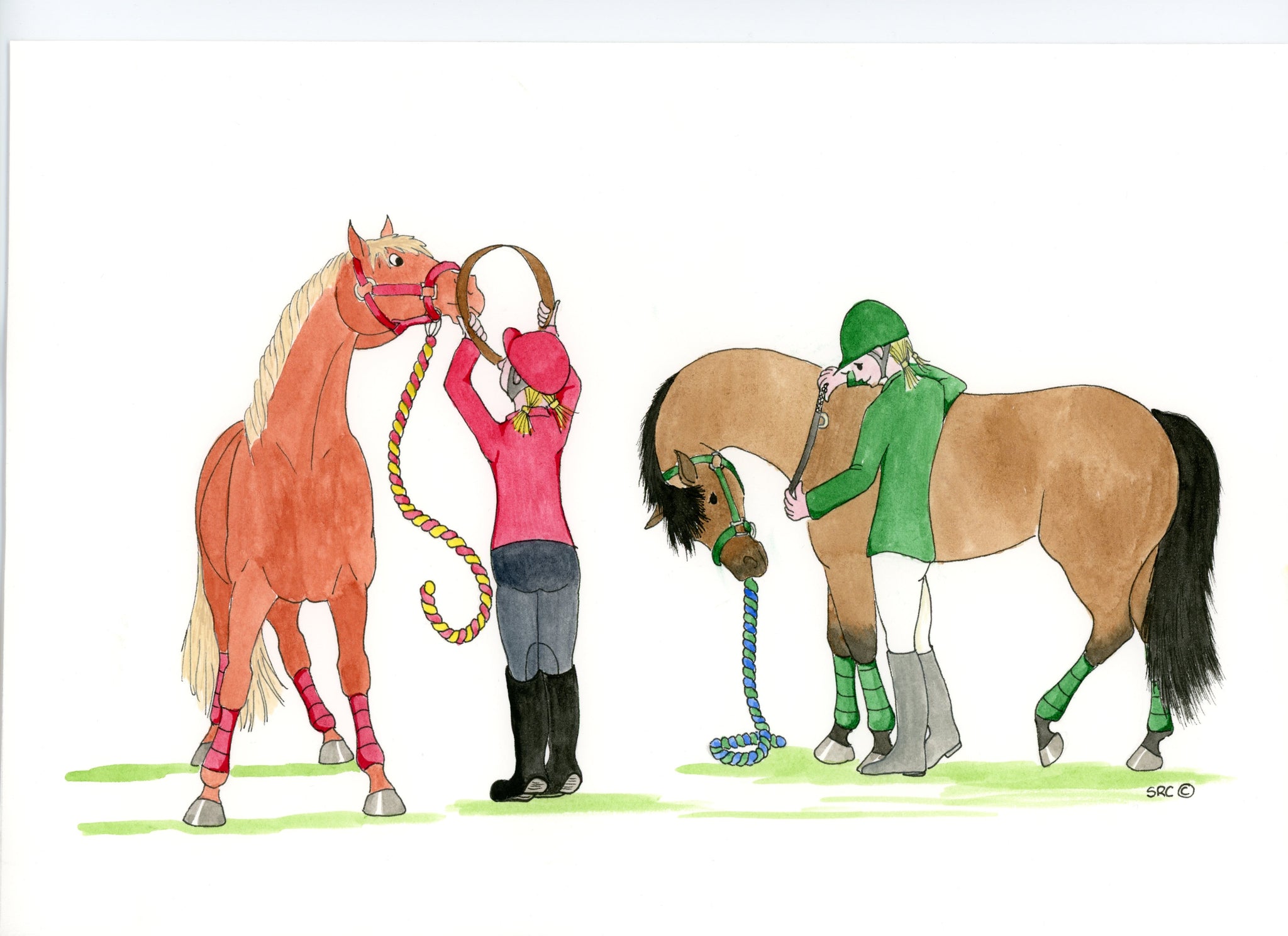
Cold Starts to Comfort Zones. Salute offers some tips for backing and starting a young horse.
Salute offers these top tips for backing, breaking or starting a young horse.
It’s important to back and start your horse at a pace that suits him, making sure he’s comfortable and confident at the stage you are at before you progress. It's advisable to have company, not only for safety but also so they can record your progress.

Here’s some simple tips to help you on your journey.
- When grooming your horse, stand on a step, or mounting block. He will get used to your presence ‘above’ and ‘from behind his ears’ him, so that once you’re in the saddle, he’s not fearful of your position. Make sure you position the block at his shoulder, tummy and flank on both the near and off sides. Once you are in the saddle, he should not be concerned where your voice or command is coming from but instead concentrate on balancing your weight.
- Try to approach him from his side and not face on- one of the advantages of our Click & Connect Neck Strap is that you can fit it over the neck and avoid disturbing his face and ears.
- Consider the weather. A cold, breezy day is likely to put the wind up many a horse - young or old. If you feel he's a bit jumpy, don't rush it, perhaps that's a day to just practice grooming him until he's more settled.
- Be aware of the clock. You'll get a feel for his attention span but many horses get brain drain. So don't over egg it for hours. After 20minutes or so, think about having a rest - or finishing for the day. That said, if he's done 5minutes good work and is beginning to lose concentration that could be enough too.
- Try and assess where your horse has his 'comfort zone'. That could be by the gate, one end of the school, or all of the arena. As he feels confident, lead him to an area outside of his comfort zone - perhaps only a meter or so - then reward him and take him back in to his comfort zone. Gradually his comfort zone will grow and ideally be to wherever you go!
- Use a massager. Handheld, over the back or in roller or rug form, we find a massager helps the horse to learn to trust you and it also helps warm his back and body up ready for work.
- To assess how relaxed - or tense - he is, look for signs;
- Are his ears attentive to you or like relaxed to the sides - that's a nice sign, whereas too pricked or hard to get his attention and he's either nosey, distracted or tense!
- Does he have tight wrinkles between his nostrils and his lips? - that's a sign of tension
- Watch his eye - a soft or bright eye is lovely but if there's whites showing he's anxious or fearful so reassure him and don't progress until he's relaxed again.
- Does he flinch along his back or down the line of the girth? If so he could be tense or sore from ill-fitting tack.
- Can you lift his tail so it is near vertical from the top of the dock. Then, can you circle it freely like a windmill - both clockwise and anti-clockwise? If so, that's a lovely sign, but if he wants to clamp it down or is resistant, you could find he's also tense along his back. Equally, this very practice can help relax his spine. Just make sure you are standing in a safe place as you do this!!
- Practice leading your horse with the Click & Connect neck strap in place. As you ask him to stop, pull on the neck strap. This will teach him to slow or stop in better balance. It will mean he’s less likely to fall onto his forehand in a downward transition. It will also make him less reliant on the bit aids. You can also use it to steer – pull the neck strap towards you to turn towards you, and the outside connector will encourage him to step over with his outside shoulder too.
- When lungeing or using long-lines, connect your Click & Connect Neck Strap to the girth of the saddle or roller. This will allow the connectors to act like long-lines and encourage your horse to walk confidently in a straight line.
- At the end of your session and when you've removed his headcollar or bridle, give him a rub up and down his face, a stroke on the neck and tell him thank you for being a good boy.
When it's time to mount - check out our blog on mounting and dismounting!
Leave a comment
Comments will be approved before showing up.



